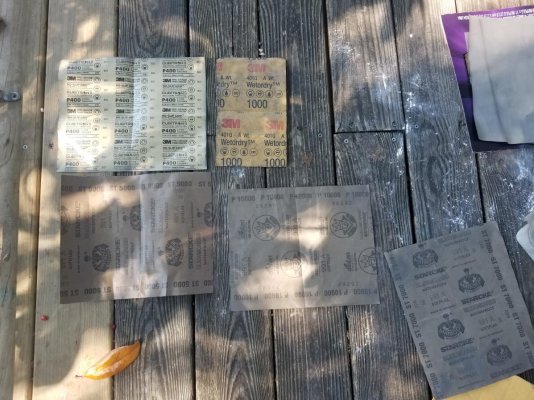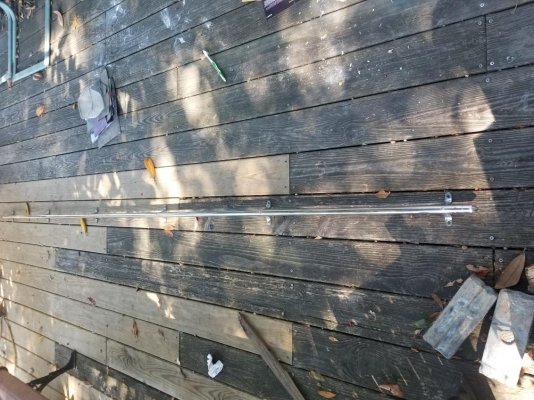sdowney717
Guru
- Joined
- Jan 26, 2016
- Messages
- 2,264
- Location
- United States
- Vessel Name
- Old Glory
- Vessel Make
- 1970 Egg Harbor 37 extended salon model
I discovered how easy it really is.
I start with 400 grit, then 1000, then like 3000 or 5000, then 10000 grit which you can get on Amazon, it really does cut at 10000 grit, feels like a paper bag.
, but very durable paper, all of it. The lower grits you can get the 3M paper. All of it dry sanding by hand. The 400 grit removes the scratches, and the others start the polishing.
After 1000 grit it looks pretty good, but the higher grits make it look like new.
If you have light scratches and gouges, this really works well. Deeper ones are more effort but do also come out. I had a few rotary sander marks I was able to remove off this rail. Anything SS, you can polish doing this by hand and it really works very fast and the results make it look new.
I start with 400 grit, then 1000, then like 3000 or 5000, then 10000 grit which you can get on Amazon, it really does cut at 10000 grit, feels like a paper bag.
, but very durable paper, all of it. The lower grits you can get the 3M paper. All of it dry sanding by hand. The 400 grit removes the scratches, and the others start the polishing.
After 1000 grit it looks pretty good, but the higher grits make it look like new.
If you have light scratches and gouges, this really works well. Deeper ones are more effort but do also come out. I had a few rotary sander marks I was able to remove off this rail. Anything SS, you can polish doing this by hand and it really works very fast and the results make it look new.
Attachments
Last edited:



